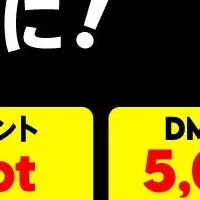
Huawei and ITU Launch Comprehensive White Paper on Lithium Batteries for Telecom Sites
A New Era of Sustainable Energy Solutions in Telecommunications
At the Mobile World Congress 2025 held in Barcelona, Huawei organized the Global Digital Power Summit, focusing on the theme "AI Powering a Greener ICT." This significant event brought together industry leaders, telecom operators, and experts from across the globe to discuss innovative solutions and the critical role of artificial intelligence in creating environmentally friendly Information and Communication Technology (ICT) solutions.
The Importance of Carbon Neutrality
During the summit, Charles Yang, Huawei's Senior Vice President and President of Global Marketing, highlighted that while the telecommunications industry has made notable strides in reducing carbon emissions, the climate crisis continues to pose a formidable challenge. It is estimated that the global telecommunications industry emits around 600 million tons of carbon annually, which accounts for 2% of the total global emissions. As telecom operators work toward achieving carbon neutrality, they face three main challenges: increasing emissions, high energy consumption, and rising energy costs.
Huawei Digital Power aims to address these challenges by integrating digital technologies with power electronics to deliver low-carbon solutions across all scenarios, helping energy consumers transition into producers and distributors.
Real-World Applications and Benefits
According to Charles Yang, numerous mainstream global operators are not only saving energy and reducing carbon emissions through Huawei's assistance but are also minimizing their energy operational expenditures (OPEX). For instance, in Pakistan, Huawei has implemented a photovoltaic energy system combined with energy storage (SES), enabling clients to replace conventional generator systems with solar power solutions, resulting in a 96% reduction in fuel consumption per site. This initiative is expected to lower energy OPEX by 38% for the ecological transformation of 1,000 sites.
In the Czech Republic, Huawei provides support to operators by extending backup times and increasing revenues through participation in the electricity market based on SES at the same site. Similarly, in Finland, Huawei has collaborated with a telecom operator to aggregate SES at telecom sites, contributing to frequency response services in residential, commercial, and industrial scenarios, significantly boosting revenues. Moreover, in Inner Mongolia, China, Huawei's solution for subsystems' separation has enabled quick deployment of large language model services in modern AI data centers.
To date, Huawei Digital Power has helped ICT clients generate 2.28 billion kWh of green energy and saved 81.6 billion kWh of electrical energy, which translates to a reduction in carbon emissions by 39.86 million tons, equivalent to planting 54.46 million trees.
The White Paper on Lithium Batteries
A groundbreaking moment during the summit was the joint release of the white paper on lithium batteries for telecom sites by ITU and Huawei, the first of its kind globally. This document advocates for the adoption of high-quality lithium batteries, emphasizing the need for batteries to have exceptional performance standards and the critical importance of establishing a comprehensive safety system. Furthermore, it analyzes safety concerns associated with lithium batteries in telecommunications, provides the latest global research findings, and outlines best practices to enhance the safe, reliable, and efficient utilization of these batteries in the communication sector.
Reyna Úbeda, an engineer with ITU-T SG5, emphasized that the standardization sector is developing norms that will enable environmental efficiency within the ICT industry. High-quality and safe lithium batteries are vital for ensuring more efficient energy storage and utilization in telecom locations, consequently reducing the overall carbon footprint of ICT operations. An additional white paper focusing on the safe utilization of lithium-ion batteries in data centers has also been released to support standardized and widespread use in the data center sector.
Conclusion
As we move further into a new era characterized by total intelligence, the integration of AI and smart scenarios presents both challenges and opportunities in energy consumption while paving the way for enhanced prospects in the global ICT industry. Huawei Digital Power is committed to continuous innovation and collaboration with like-minded partners worldwide to create new business value and contribute to a better, greener future.
For more information, download the white paper here: ITU White Paper.
Topics Telecommunications)










【About Using Articles】
You can freely use the title and article content by linking to the page where the article is posted.
※ Images cannot be used.
【About Links】
Links are free to use.